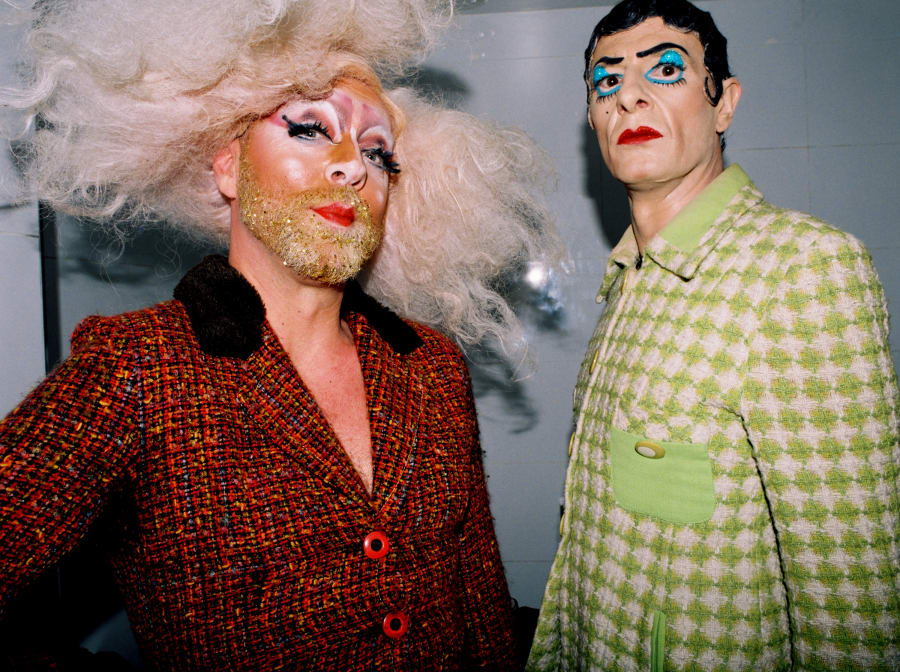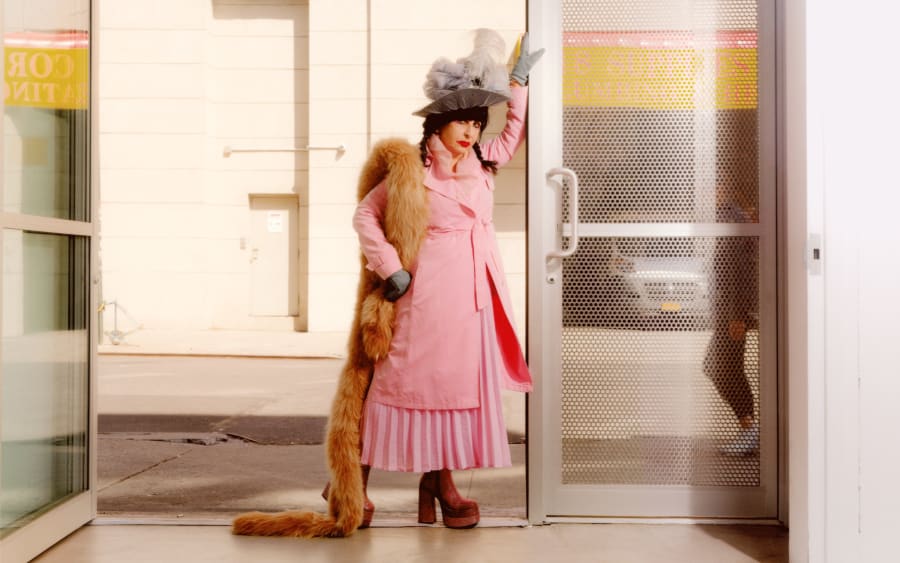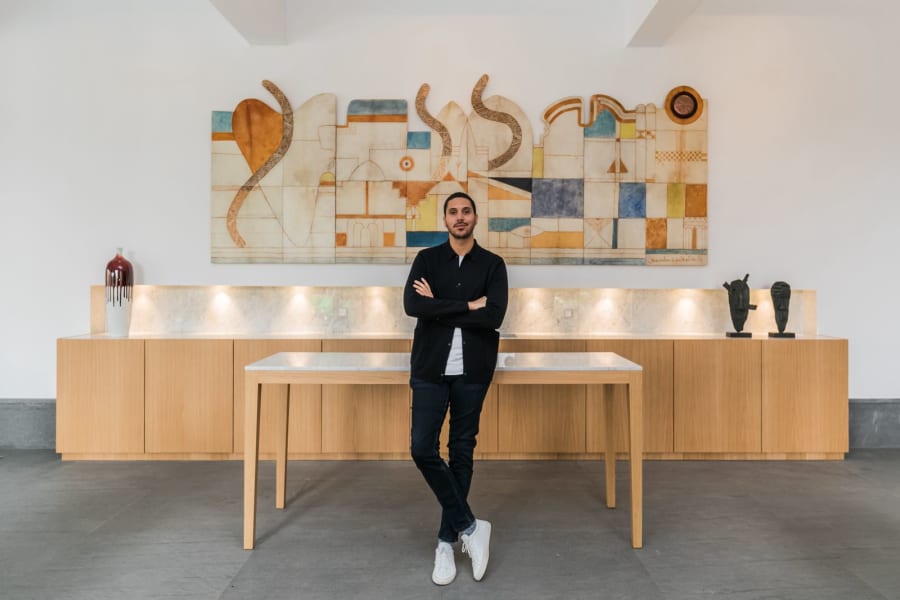In 1970, Milan’s artistic circles buzzed with anticipation over an installation at the Galerie Apollinaire that promised to challenge boundaries. Visitors attending the exhibition encountered a striking sight: a large, penetrable structure lined with violet-colored fake fur. At once enigmatic and provocative, the artwork left an indelible mark on all who experienced it.
The cubic installation, reinforced with metal for stability, stood upright at the center of the gallery. Oval openings punctured its walls, allowing glimpses of the interior, while numerous zippers hinted at the possibility of interaction – a veiled invitation to a still-mysterious communal action. This plush, immersive work was La Chambre en fourrure [Fur Room, 1969] by Nicola L.
The installation was to become one of the most emblematic works of the Moroccan-born French artist’s career. Speaking with the journalist Jean-Pierre Van Tieghem, she described it as ‘a house made of empty figures that you can enter, envelopes of empty human bodies that you can penetrate.’ What made La Chambre en Fourrure particularly distinctive was the element of activation. Visitors were invited to unzip the structure and wear one of the 14 purple fur garments integrated into its walls. Hanging limply, looking like protective suits, they seemed akin to characters waiting to be brought to life – characters that have been stripped of common societal markers such as gender, race, or social class.
The work made its debut in a gallery with its own subversive history, for it was here in Milan that Nouveau Réalisme was born in 1960, as defined by the critic Pierre Restany and the artist Yves Klein. A decade later, it would be Restany once again who would coin the term ‘pénétrables’ to describe the interactive works Nicola L. had been developing since the late 1960s.
By this time, the artist had relocated to New York, drawn to the city’s vibrant creative scene. In America, where she would remain until her death in 2018, she encountered Pop Art and created works such as La Femme Commode (1969), a wooden ‘furniture sculpture’, and Brown Foot Sofa (1969), a playful vinyl-covered foam piece shaped like an oversized foot. Her collaborations with figures like Carolee Schneemann and Claes Oldenburg helped sharpen her anti-patriarchal ethos, and infuse her work with a subversive energy that balanced whimsy with eroticism.
As the revolutionary spirit of May ’68 spread, Nicola L.’s art took on an increasingly political dimension. She championed collective action – communal, friendly, even orgiastic – all grounded in a holistic vision. In the context of the hippie era, La Chambre en fourrure emerged as a quintessential product of its time. Yet its resonance endures: It remains a landmark work of activist art of the period, dismantling societal norms through collective, participatory experience. It is, above all, a call to transformation, unity, and radical experimentation.
Nicola L. is represented by Alison Jacques (London).
’Nicola L.: Chelsea Girl’
Until May 18, 2025
Frac Bretagne, Rennes
Ingrid Luquet-Gad is an art critic and PhD candidate based in Paris. She teaches art philosophy at the University Paris 1 Panthéon-Sorbonne.
English translation: Art Basel.
Caption for header image: Installation view of La Chambre en fourrure (1969) in the exhibition ’Nicola L., I am the Last Woman Object’, Camden Art Centre, London, 2024. Photo: Rob Harris.
Published on February 6, 2025.


